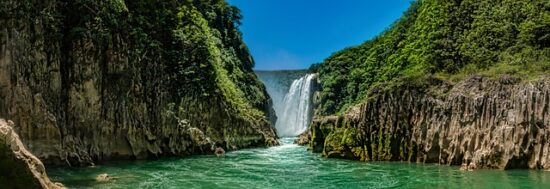Amazon River is in South America and is surrounded by thick amazon rainforest. The snake-like River is a magnificent river for it is home to millions of animals and plants. Almost one-third of all species in the world are found in Amazon Rainforest. Let’s discover some more amazon river facts for kids!
Amazon River Facts For Kids
Characteristics and Size
The Amazon River is the second longest river in the world—after the longest River Nile. The length of the river is measured around 6,400 to 6,800 kilometers. It is quite difficult to measure the total length and is still under discussion. Besides, the geologists are not certain regarding the exact origin of the river. It runs across the North of Brazil.
It is the largest river in terms of water discharge as the average water-flow is 209,000 cubic meters per second. The total volume of water being discharged from the Amazon River is 220,800 m3 per second
It has the largest drainage basin in the world measuring 7,050,000 sq. kilometers and accounts for almost one-fourth of the total waterflow in the world. The river carries almost 15 percent of the world’s freshwater and discharge into the oceans. (UNEP Amazon Basin GIWA Assessment 40b). The river has the largest area of land through which the water flows and it contains 200 tributaries.
The river can be as wide as 48 kilometers or it can be as low as 10 kilometers depending on the season.
During wet season, the river becomes wider and rises 30 feet thus flood the surrounding rainforest habitats. The maximum water it releases into the Atlantic Ocean is great and is up to 300,000 cubic meters per second.
 Source of the River
Source of the River
The source of the Amazon River is in snowcapped peak known as Nevado Mismi and Peruvian Andes. It has several primary river systems such as in Peru, Ecuador, and Columbia probably due to the fact that seven countries share the Amazon Basin including Peru, Brazil, Ecuador, Columbia, Venezuela, Bolivia, and Guyana.
Amazon River’s headquarters are located in the Andes Mountains while the source of many amazon tributaries remains in the Brazilian and Guyana shields. The origin in the Andes Mountains is almost 100 km from the Pacific Ocean. The central, the lower, and the mouth of the river is included in Brazil and it goes into the North Brazil Shelf Large Marine Ecosystem.
Climate of the Amazon Basin
The temperature of the amazon basin remains relatively small despite the enormous size of the basin. The temperature remains in between 24o to 26o.
Annual Rainfall
The total annual rainfall on the Amazon River varies throughout the coastal regions; the mouth of the river experiences the total annual rainfall of 3,000 mm, whereas in the less rainy parts ranging from Roraima all through the State of Goiaz (Brazil), the rainfall varies in between 1,500 mm to 1,700 mm.
Fish Diversity and other Species
Although the exact number of fish species in the Amazon River is difficult to predict yet the total number of fish in South America is 5,000 to 8,000 most of which belongs to the Amazon River. Of all the freshwater dolphins, Amazon River dolphins are the largest as they can grow up to 8 feet in length. Alongside river dolphins, Tucuxi dolphins are also found in the Amazon waters. Other mammals such as Amazonian Manatee also live; and the largest snake species Anaconda often swims in these waters.
Learn more: Amazon Rainforests Facts For Kids
Leave a Reply